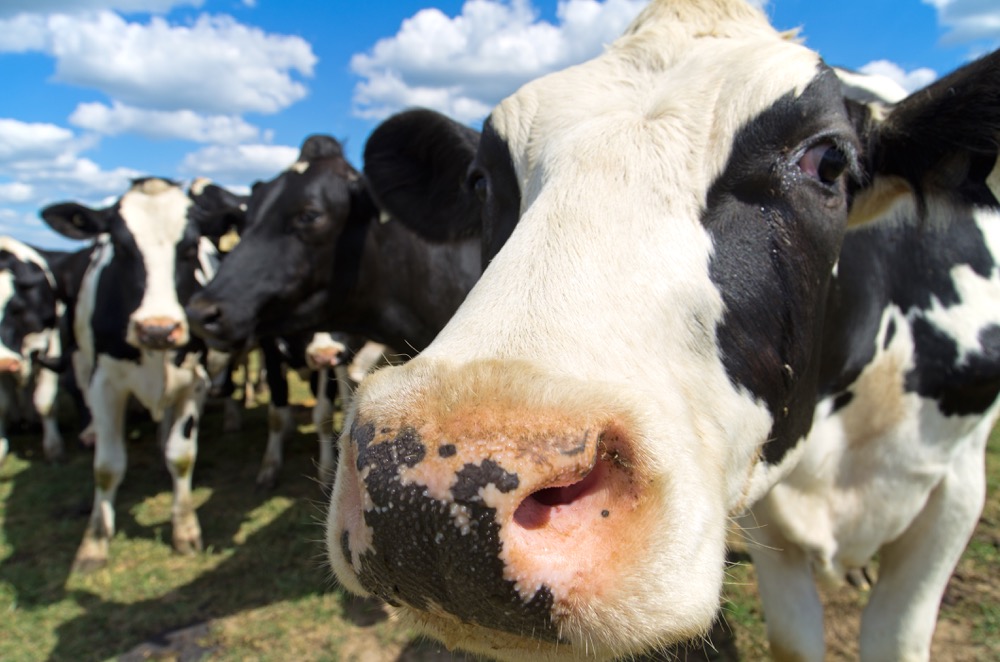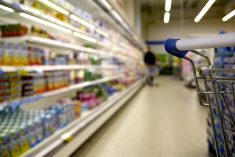Grain farmers have experienced it: The worry about grain car accessibility and the multiplying losses when grain cannot be shipped or sits at port.
Cattlemen know the importance of an open border. Almost everything we grow in Canada is exported in some form and this relies on rail, trucks, air transport but more importantly, transport by sea through warm water ports.
Getting product on a rail car or in a refrigerated van is one thing, getting it on the ship is quite another.
As I’m surrounded by the Salish Sea and live on the Juan de Fuca Strait, I can see the cargo traffic that lines up from the Pacific Ocean, sometimes mooring for a day or two before heading into the Port of Vancouver. The route is to Victoria, past the Saanich Peninsula, up the Strait of Georgia, through the Second Narrows and into the terminal. The Port of Vancouver handles more than 50 per cent of all cargo traffic in Canada. The continuous access to a warm water port makes this narrow shipping lane and deep water port the nexus in the economics of our national trade. Around 90 per cent of global trade is by sea.
Read Also

The great food summit adventure
Alberta Farmer columnist Lee Hart attended the Food Leadership Summit in Calgary, where about 400 ag industry players gathered for the new annual conference.
On the farm we may not realize the importance of this liquid prairie and its multitude of roles.
- More with Brenda Schoepp: It’s Home Economics 101 — and a lesson for our time
The ocean is the world’s largest source of protein and through phytoplankton she produces 70 per cent of the Earth’s oxygen, which complements the grasslands and forests. The sea is our lungs and her harbours are pivotal points in our infrastructure to move agricultural product.
Enabling policy through a regulatory framework that functions is always desired. Trading partners need to do just that — trade. Without functioning ports, economies can be crippled.
This has been exemplified in the Brexit upheaval.
Of all the headlines that catch my attention, none does more so than the loose ends regarding port access for the trading partners of the U.K. The shipping industry is tightly regulated. Unlike a roadway, you just don’t jump on your boat or ship and sail. There has to be a registered plan and that information is forwarded to port of entry.
Consider the Eurotunnel that is a truck route on a rail carrier that lies under the sea across the Strait of Dover from England to France. There are 50 crossings per day carrying 60,000 passengers and C$200 billion of goods annually which account for 20 per cent of the perishable food in the U.K. and 26 per cent of the trade between central Europe and the U.K.
Imagine the chaos of inspecting those trucks by holding them on English soil or diverting them for inspection — and the cost to the product and the buyer. Customs and seaport experts are not projecting delays in terms of minutes or hours, but in days and weeks. This can put product at risk in terms of its identity (fresh or chilled as an age limit), quality, and salability. There is currently no corresponding direction in place to fit into the proposed Brexit movement of goods over the sea, below it, or by any other transportation means.
It is this area of uncertainty that has food suppliers worried, especially about fresh products such as meat and other fresh protein, fresh fruits and veggies; animal feed; and any animal product. You can bet someone will call it a non-tariff barrier and other countries will not be willing to foot the bill for improvements on a project they never voted for.
Is the fact that grocers are stocking up in U.K. warehouses an overreaction? Not really.
The industrialization of food purchasing through large grocers is relatively new in the past 40 years. But these have been critical years as the art of growing food and being able to sustain oneself has been generationally lost.
Today’s consumer literally waits for their ship to come in.
In my studies through my Nuffield Scholarship and again with my MA in Global Leadership; I’ve examined how infrastructure, and specifically food arteries through ports, are critical areas that need improvement, greater capacity, protection, and technological advancement. These structural pathways are the lifeline to food access and to food security. On the Prairies and in the cities, it is food that requires functional and accessible rail cars, trucks, pipelines (why not), airports, and most importantly, seaports.
The U.K. imports 60 per cent of its food requirements and Canada is its third most important trading partner. Canadians are highly dependent on export trade to the U.K. sending large quantities of metals, machinery, and minerals. A backlog at any one of the receiving ports would have a monetary effect here at home.
Regional politics such as Brexit and the underappreciation of broken or non-functioning infrastructure has put the plate at peril — and there is no greater social injustice than jeopardizing food access.
The economic strength of a country is supported by food production, processing, and delivery infrastructure that works and a complementary robust middle class. A threat to either becomes a costly injustice to all.
















